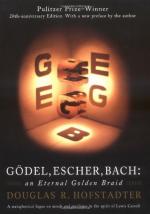|
This section contains 4,521 words (approx. 16 pages at 300 words per page) |

|
SOURCE: Fayez, Ghulam M. “Images of the Divine in Rumi and Whitman.” Comparative Literature Studies 17, no. 1 (March 1980): 33-43.
In the following essay, Fayez analyzes the concept of “the Divine” in Rumi and Whitman and also argues, through close readings of several of Rumi's ghazals, against Whitman's “Chanting in the Square Deific,” “A Persian Lesson,” and “Song of the Rolling Earth” that Rumi's work was critical to Whitman's transcendentalism. Fayez notes that Whitman read Rumi’s poetry in Poetry of the East in 1865 and strongly identified with the medieval mystic.
Mystic poets like Rumi and Whitman reveal a more humane and democratic image of the Divine than, say, do theologians or even philosophers.1 A theologian, who may like to pose as a rather rationalist scholar of religion, is often inclined to conceptualize God in terms of the history and literature of a given religion, but a mystic with a...
|
This section contains 4,521 words (approx. 16 pages at 300 words per page) |

|


